Unbalanced Tires Symptoms and How to Fix The Problem
Regular check-up of your car is extremely important, as it ensures not only comfort but also your safety on the road while driving.
Just like you need to check the water in the battery, the pressure in the brakes or the air pressure in the tires, you must also check whether or not the tires are balanced. This is crucial for your safety, as it can be extremely dangerous to be driving with unbalanced tires.
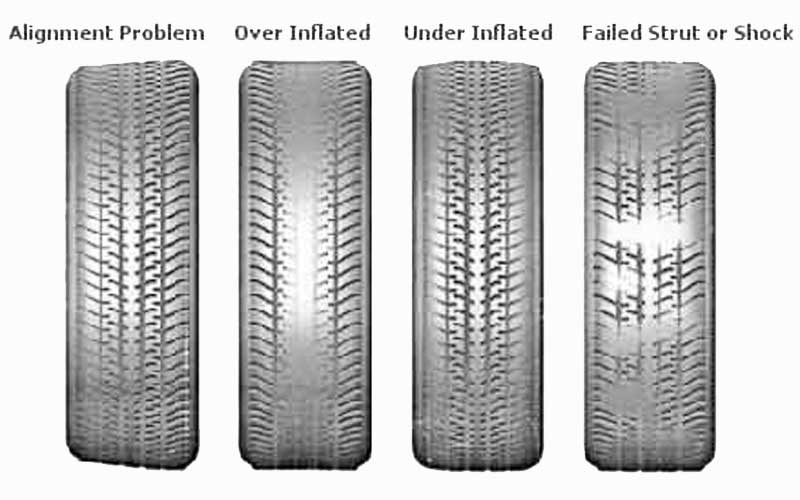
Unbalanced Tires Symptoms
Vibrations in the car’s body
If all of a sudden you start feeling vibrations in the car’s body, it’s probably because of one of the two reasons given below:
- Uneven road
- Unbalanced tires
If the road you are driving at, even, then you can cancel out the first option, and that only leaves us with the latter one being unbalanced tires.
If the tires are not balanced properly, then the weight of the car is distributed unevenly on each one of the tires. This way, as they get in contact with the surface of the road, they rotate differently.
This rotation exerts an uneven force on the ground from the tires, and as a reaction to this uneven force, a force is then exerted on the car’s body, which too is uneven and hence results in vibrations.
As you increase the speed, the vibrations tend to grow. They start with the brake pedal and then eventually reach the steering wheel until at around 50-60 mph where the vibrations stop.
Uneven tire tread wear
This is another good method for checking whether your tires are unbalanced or not. If the tires are worn out from only some specific areas and not on the whole, then it’s probably because your tires are unbalanced.
We can tell this because the areas that are lower than some other areas of the tire get more into contact with the surface of the road, which causes them to wear out first.
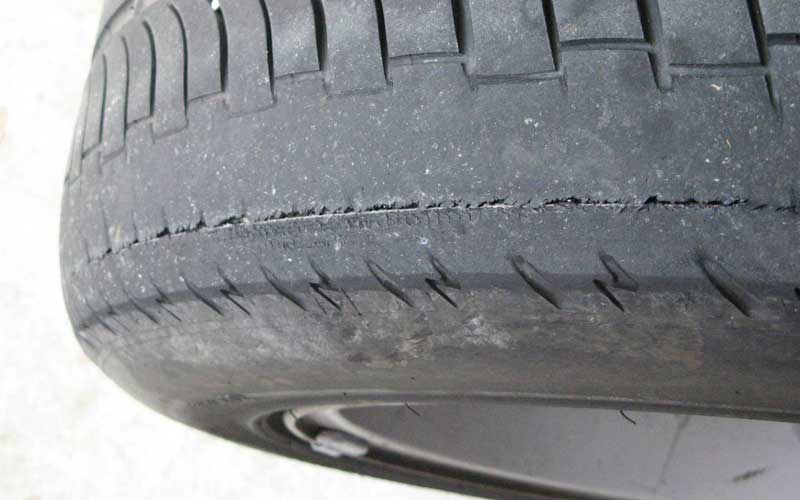
With only some areas of your car’s tire being worn out, your car might be at the risk of getting flat tires, as some areas are weakened more as compared to the rest and this can cause a lot of problem at high speeds on the highway and might even result into a serious accident.
The problem in the steering wheel
As we discussed earlier, unbalanced tires can also cause vibrations in the steering wheel, and if these vibrations grow big enough, they might cause serious harm as they can be very distracting and also affects the movement of the steering wheel and tend to restrict it which causes a delay.
Shock absorbers and wheel bearings getting affected by unbalanced tires
Both the shock absorbers and the wheel bearings are in close contact with the tires and the force due to the unbalanced tires exerted on the car’s body may result in these two parts being damaged.
The wheel bearings, when damaged, will cause noise during movement, and it may also result in the steering wheel becoming loose.
The damage of the shock absorbers, on the other hand, will result in the ride becoming bumpy.
Decreased Fuel Economy by the increase in consumption
Another downside to having unbalanced tires is that they make the car require more power to move, which makes the engine work harder and essentially uses more fuel.
So these are some of the ways you can tell whether your car’s tires need balancing or not. Now, once you have decided that you need to get your car’s tires balanced, you must also want to know how to do it.
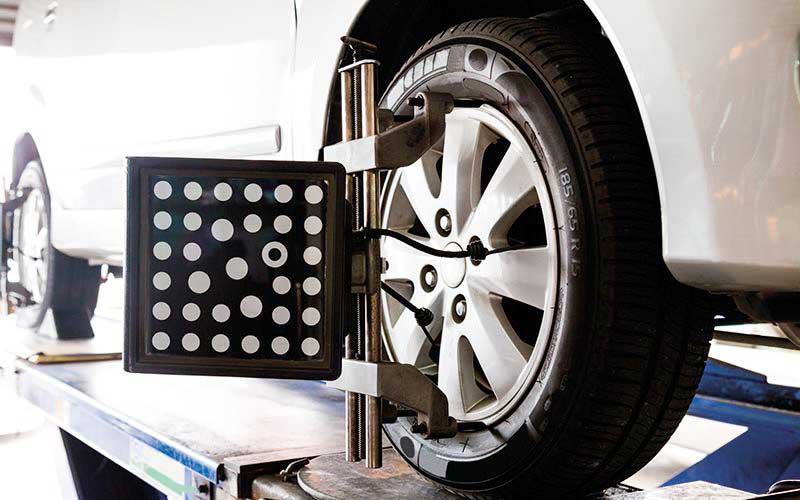
Mainly you have two options, you can go to a mechanic and get the tires balanced at some garage, or you can do it at home. We will discuss in detail the cost structure of both options and how to do it at home.
Getting it done by a mechanic
The mechanics put your tires to the test on a balancing machine one by one, and if it needs balancing, they do it by applying weight at the desired areas.
The whole process takes only about an hour for all four tires, and as for the cost, it varies from $15 to $80 for all the tires. This cost varies on the basis of many factors like location, tires, warranty, etc.
Doing it yourself at home
Fixing your tires at home is totally possible. However, the method you use majorly depends on whether you have a balancer or not. Hence, we will classify the procedure into two categories:
With a balancer
Owning a balancer slightly makes things easier for you.
You can follow these simple basic steps to balance your tires yourself
- You first need a jack and a wrench to remove the tire from the car.
- Once you have done that, you can get down to the balancing. For that, you will need a balancer and some wheel weights.
- If you have the static or the spin balancer do as follows:
- Initially, remove all the weights on the tires before you rebalance them.
- Remove any dirt that might be accumulated in the small parts of the wheel and the whole tire. You can even wash all the removable parts and then dry them.
- Now put the assembly onto the balancer and follow the instructions written on the manual.
- Mark all the points where the balancer says you need to put the weights on.
- Put on the weights and recheck the balance with the balancer.
- Keep on adjusting the weights till the tires move perfectly like they are supposed to depend on the type of the balancer you have.
- Put the tire back on and tighten the nuts.
- Repeat the same process for all tires until all four of them have been balanced.
Without a balancer
Not having a balancer can make the procedure slightly time-consuming, but on the bright side, it also saves you a lot of costs. The process, even though time-consuming, isn’t hard at all and can be done simply by trial and error until you feel like the tires have been perfectly balanced out.
To first know which of the tires are unbalanced, observe the vibrations as you increase the speed of the car.
If the vibrations are mostly in the steering wheel, it means that the front tires need attention while on the other hand, if the vibrations are at the car’s floor or the seats, then you need to test the rear wheels.
For vibrations in the whole body of the car, it’s better to test all four tires.
Follow the following steps to balance out the tires
- Initially, using a jack and a wrench remove the tire you are testing.
- Remove all the weights from the respective wheel.
- Once you have removed the tire, clean it. It’s preferable to wash all the removable parts and then dry them for better results.
- Now install a weight at a point and remember it or mark it. Now reverse the car to a speed where it starts vibrating.
- If there is still vibration, remove the weight from that position and add it at an angle of 45° to its initial position.
- Repeat the same process and keep repeating it until you reach a point where the vibrations decrease or are completely gone. You can add more weights there.
- Repeat the same process for all the tires.
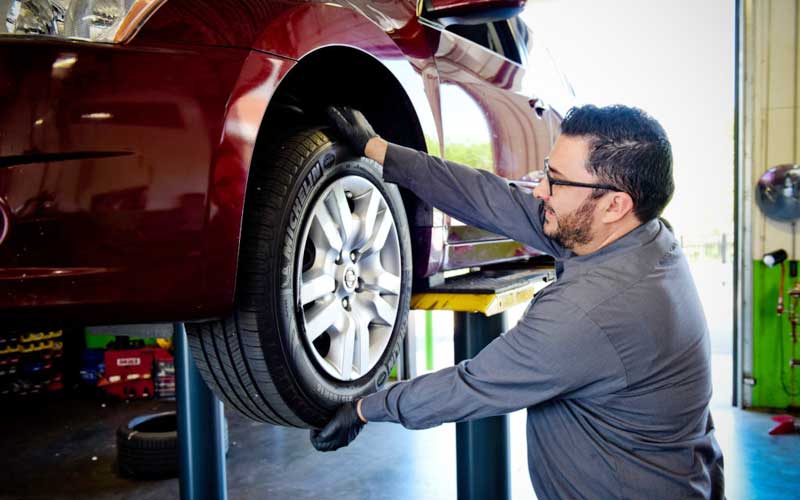
Things to keep in mind while choosing the right Wheel weights:
While making a selection for the weights, you need to keep in mind that there are two types of weights mainly:
Clip-on
These have a hook-like extension which clips to the rim flange of the car. However, to install them, you are going to need a hammer and hence, their other most commonly used name ‘bang-on.’
Different models of these are available for different cars. Make sure the model you select matches your vehicle.
Adhesive weights
These weights are universal and easy to install as they got a strong adhesive on one side. They are attached to the inner side of a wheel, where the tires are unbalanced.
An additional advantage to these is that they don’t damage and cause corrosion, unlike clip-on weights. To strengthen the weights on the wheel, you can use duct tape, as well.
Conclusion
Balancing the tires is crucial for your own safety and should be done on a regular basis, especially when you observe the following symptoms.
Unbalanced tires cause vibrations in the car, loosening of the steering wheel and damage in the shocks and wheel bearings and all these problems are serious and can result in a serious accident, and therefore, it’s important to keep your car maintained and the tires balanced.
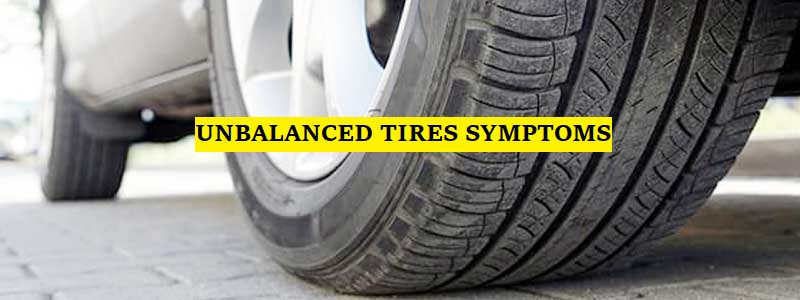





Post Comment